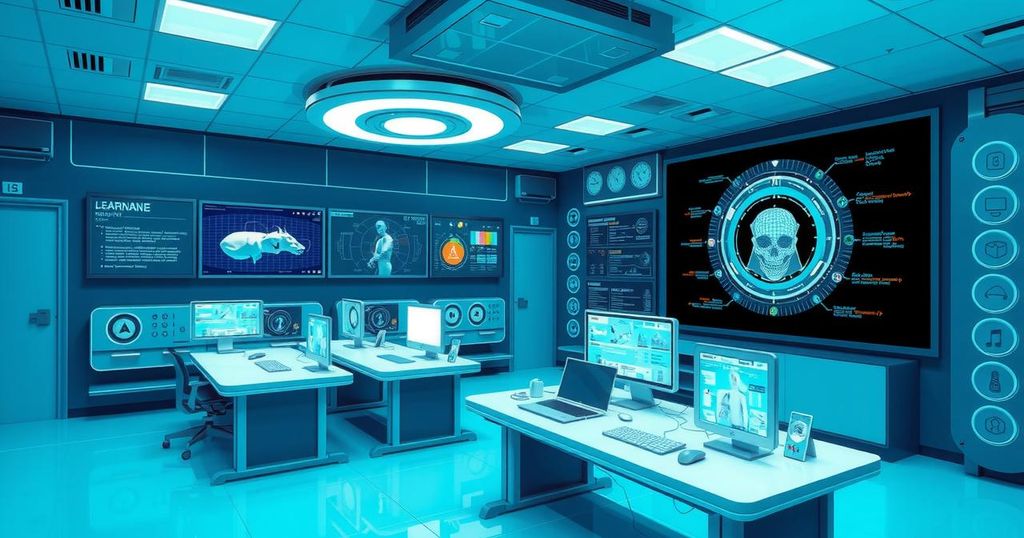Harnessing AI for the Future of Military Medicine: Dr. Woodson’s Vision
Dr. Jonathan Woodson, president of USU, emphasizes the urgent need for military medical training to adapt to digital technologies like AI and telehealth. He points out significant skills gaps and advocates for updated curricula integrating these tools. Despite challenges of resistance and ethical issues, he sees the potential for transformative change in military medicine, which is crucial for national security.
In March 2025, Dr. Jonathan Woodson, head of the Uniformed Services University, conveyed a solid message to military health leaders about the necessity of adapting medical training for an ever-evolving digital health landscape. He emphasized that today’s army needs a medical workforce that’s adept not just in traditional skills but also in the digital realm. “We need a workforce that is not only clinically competent but also digitally literate, capable of using advanced technologies such as artificial intelligence, telehealth, and machine learning to enhance medical care in military operations,” Woodson pointed out.
The good doctor didn’t mince words, calling the era of digital health both a remarkable chance and a daunting challenge. He stated, “Digital technologies and reality in digital health care present both an unprecedented opportunity and critical challenges for our military medical readiness.” His argument was simple: integrating new medical technologies isn’t just a nice-to-have; it’s something that’s fundamental to effective and efficient care.
Woodson elaborated on training this new batch of medical professionals in AI technologies and other digital tools. He stressed the critical nature of preparing the military healthcare workforce amidst budget cuts and downsizing, saying, “The successful integration of these technologies within the Military Health System hinges on preparing the workforce.” Underlining the urgency, he observed a “significant digital skills gap” that could hinder progress.
He lamented, “We have insufficient numbers of digitally skilled health professionals to support the digital health transformation that needs to occur.” The challenges extend beyond hardware access; it’s about ensuring personnel can effectively wield these tools in innovative ways. Woodson called for curricular revamps that account for how modern students absorb information and interact with technology.
“We must integrate digital health modules into our training curricula,” he said. He’s optimistic about the potential of the upcoming generations, remarking that today’s younger students—many of whom are digital natives—will likely lead the healthcare revolution and reshape educational methods. He reflected on his own schooling, joking, “Some of us are old enough that when we went to medical school, we had to read this enormous book.”
Today’s learners prefer to engage in shorter and sharper content, often utilizing tech like AI to condense complex subjects into more digestible formats. At the USU, a variety of innovative AI applications, such as personalized learning paths and interactive simulations, are reshaping how students are trained. Woodson praised efforts by USU students who are pushing the envelope in modernizing education methods, optimizing techniques that lead to better engagement and performance.
Among the new approaches highlighted were AI-driven content synthesis and methods for student-tutor interaction using simulated scenarios—an exciting glimpse into the future of medical training. “These personalized learning pathways are enhancing students’ ability to master complex medical concepts,” he noted.
While these advancements are promising, Woodson didn’t shy away from spotlighting the hurdles standing in the way of success. He talked about the resistance to change, funding issues, and ethical questions surrounding the use of technology in military medicine. “We must develop clear ethical guidelines and regulations to use these digital technologies in military medicine,” he declared firmly.
Woodson stressed the importance of keeping a balance between high-tech support and the human aspect of care, reminding everyone that technology should enhance, not replace, the human connection in medicine. His recommendations included piloting new programs and maintaining a strong focus on patient-centered care. Ultimately, he made a compelling case: preparing our military healthcare team for this digital future is about more than just technology; it’s crucial to national security itself, particularly as the need for timely and effective medical care in modern warfare becomes increasingly urgent.
Dr. Jonathan Woodson underscored the critical need for a tech-savvy military medical workforce, calling for comprehensive training in AI technologies. Addressing a significant skills gap, he stressed the importance of educational innovation to prepare future healthcare professionals in the digital age. While challenges exist, like resistance and ethical concerns, proper integration of technology can revolutionize military medicine, proving crucial for national security and effective care. In the end, melding technology with the human touch is essential for the future of military healthcare.
Original Source: www.dvidshub.net




Post Comment